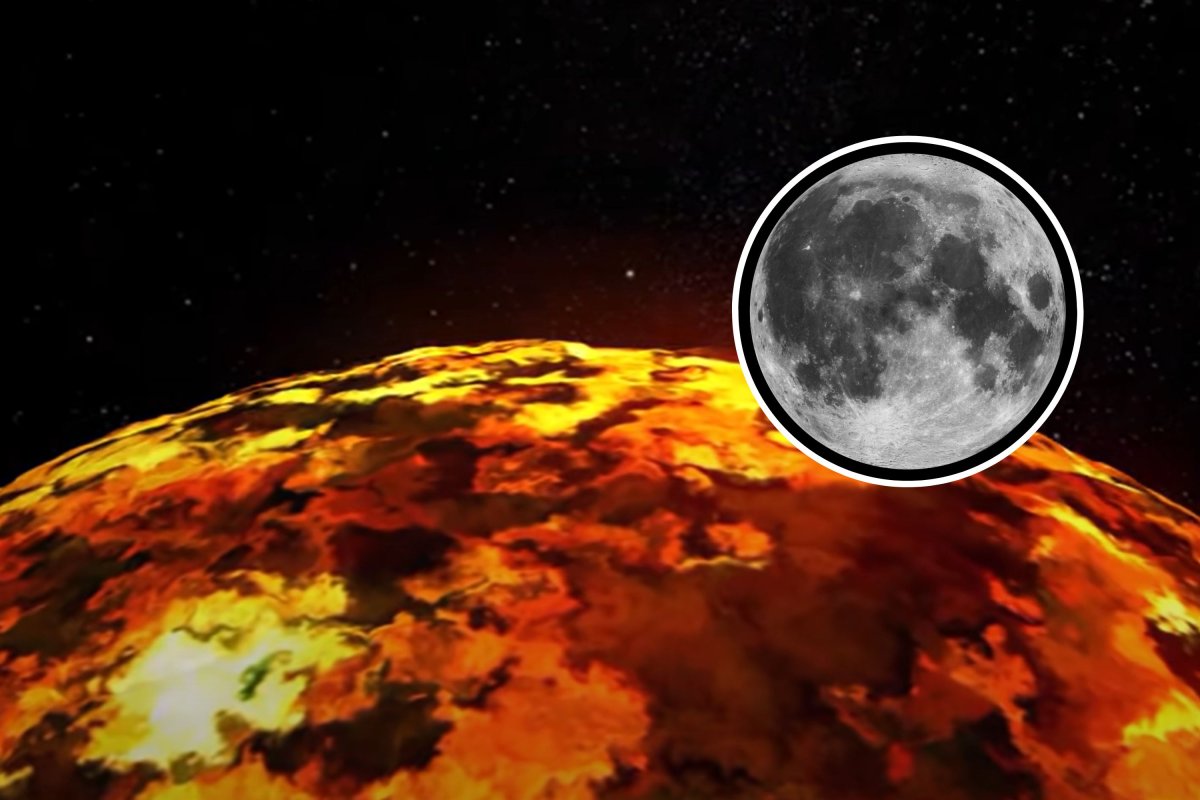Earth’s quiet and cool companion to the moon may have once been a ball of molten rock, new research has found.
The Moon has long been thought to have formed as a result of a Mars-sized planet called Theia that crashed into the Earth first about 4.5 billion years ago, and the debris from the collision eventually coalesced into form a ball of molten rock, and slowly it foams. the month we have today.
New evidence supporting this mysterious history comes from data collected by the Pragyan rover of India’s latest Chandrayaan-3 mission, according to a new paper in the journal Nature.

NASA / Goddard Space Flight Center / Goddard Space Flight Center Scientific Visualization Studio
In the paper, the researchers describe how the Pragyan rover made 23 measurements around the three-hundred-foot mountain range of the south moon, farther south than any other lunar rover had taken. examples.
Using an instrument called the Alpha Particle X-ray Spectrometer (APXS), Pragyan was able to analyze the data in these lunar soil samples, which revealed that the chemical composition of the regolith in around the slice was very similar, mainly containing ferroan anorthosite. .
According to the researchers, the chemical composition of the moon’s south pole regolith was also found to be intermediate between the samples collected by the US Apollo 16 mission in 1972 and the samples returned by the Luna-20 mission of Soviet Union in the same year. both are collected from the equatorial regions of the Moon.
The similarity of the chemical compositions of these samples, even though they were taken from the far reaches of the Moon, supports the idea that the Earth’s magma ocean once coated the Moon in its early history.
This theory, known as the lunar magma ocean (LMO) model, explains how debris from Theia’s impact coalesced to form the moon, with the force of this event making the newly formed moon extremely hot. which has a melting point. As the magma ocean began to cool, it is thought that minerals containing various metals came out of the molten material, with denser minerals such as olivine and pyroxene sinking to form the lunar mantle, while minerals lighter ones, such as anorthosite, floated to the surface and formed. the surface of the moon.
One of the key predictions of the LMO model is that the upper part of the moon is made of ferroan anorthosite, already floating on top of a molten ocean. Therefore, these findings of ferroan anorthosite by Pragyan in the southern highlands of the moon support this theory.
“23 close-up measurements by Chandrayaan-3 show that the surface of the moon is homogeneous and is mainly composed of ferroan anorthosite (FAN), a product of lunar magma ocean (LMO) crystallization. ,” the researchers wrote in the paper.
The rover also found traces of thick magnesium minerals that should sink, according to theory, however, researchers suggest that this could have been brought to the surface by a meteor impact.
“However, the relative abundance of magnesium in relation to calcium in the APXS measurements suggests the inclusion of other mafic materials,” the researchers said.
Do you have any advice on science fiction that Newsweek should cover? Have a question about the moon? Let us know at science@newsweek.com.
References
Vadawale, SV, Mithun, NPS, Shanmugam, M., Basu Sarbadhikari, A., Sinha, RK, Bhatt, M., Vijayan, S., Srivastava, N., Shukla, AD, Murty, SVS, Bharwaj, A. , Acharya, YB, Patel, AR, Adalaja, HL, Vaishnava, CS, Saiguhan, BSB, Singh, N., Kumar, S., Painkra, DK, … Amitabh. (2024). Chandrayaan-3 APXS measurements of large masses in the lunar surface. Nature. https://doi.org/10.1038/s41586-024-07870-7
#moon #covered #vast #ocean #magma #scientists